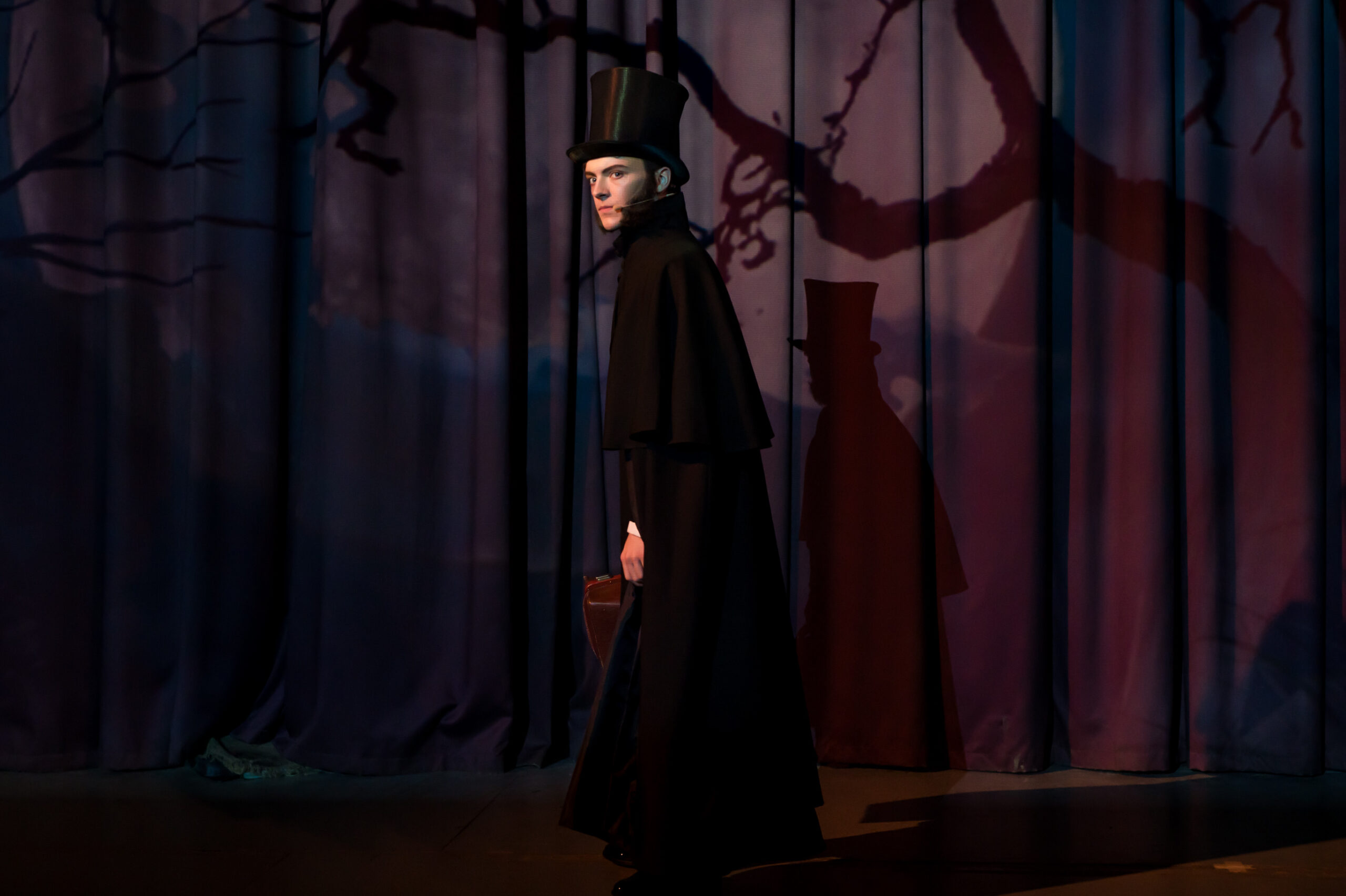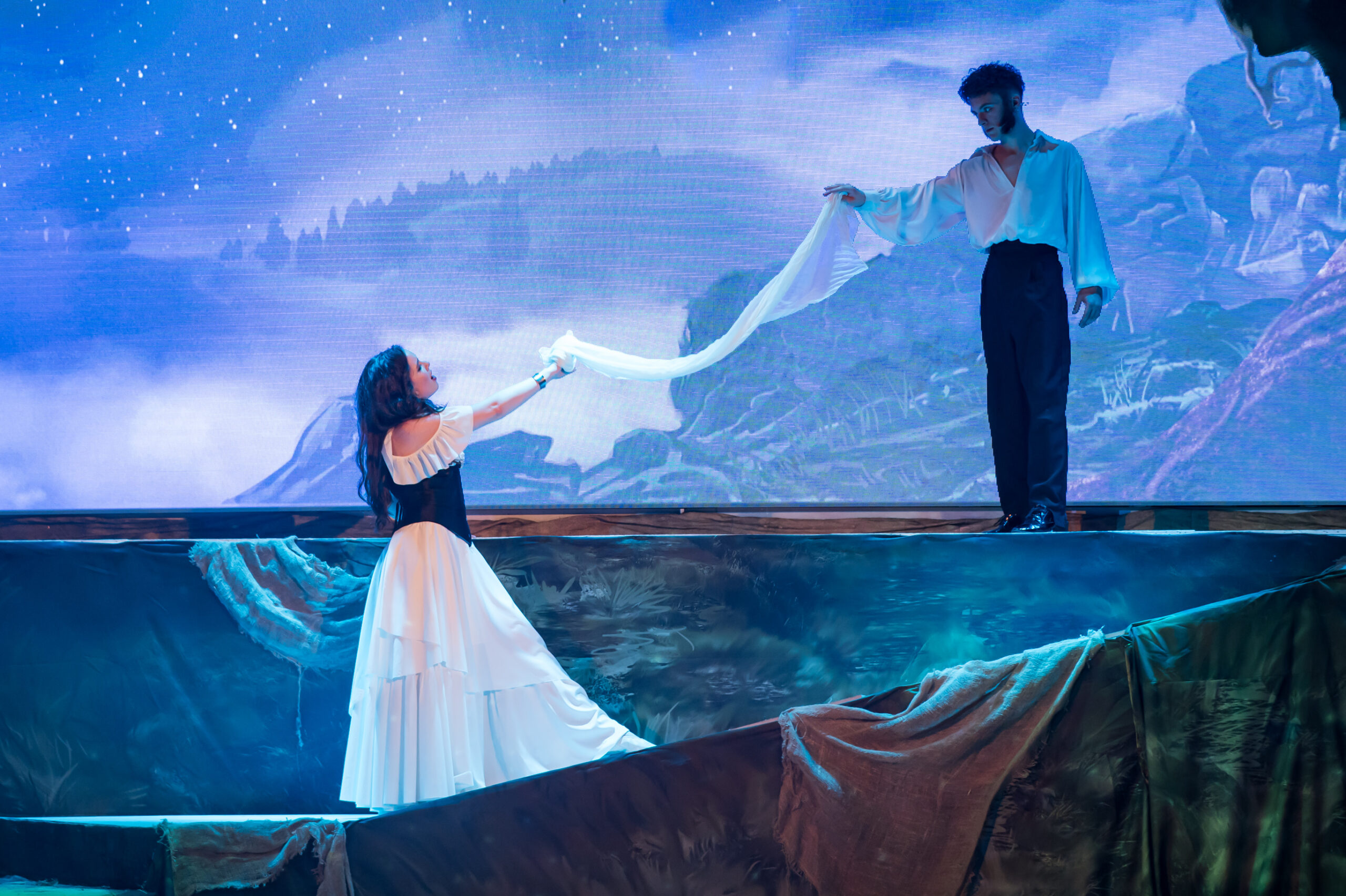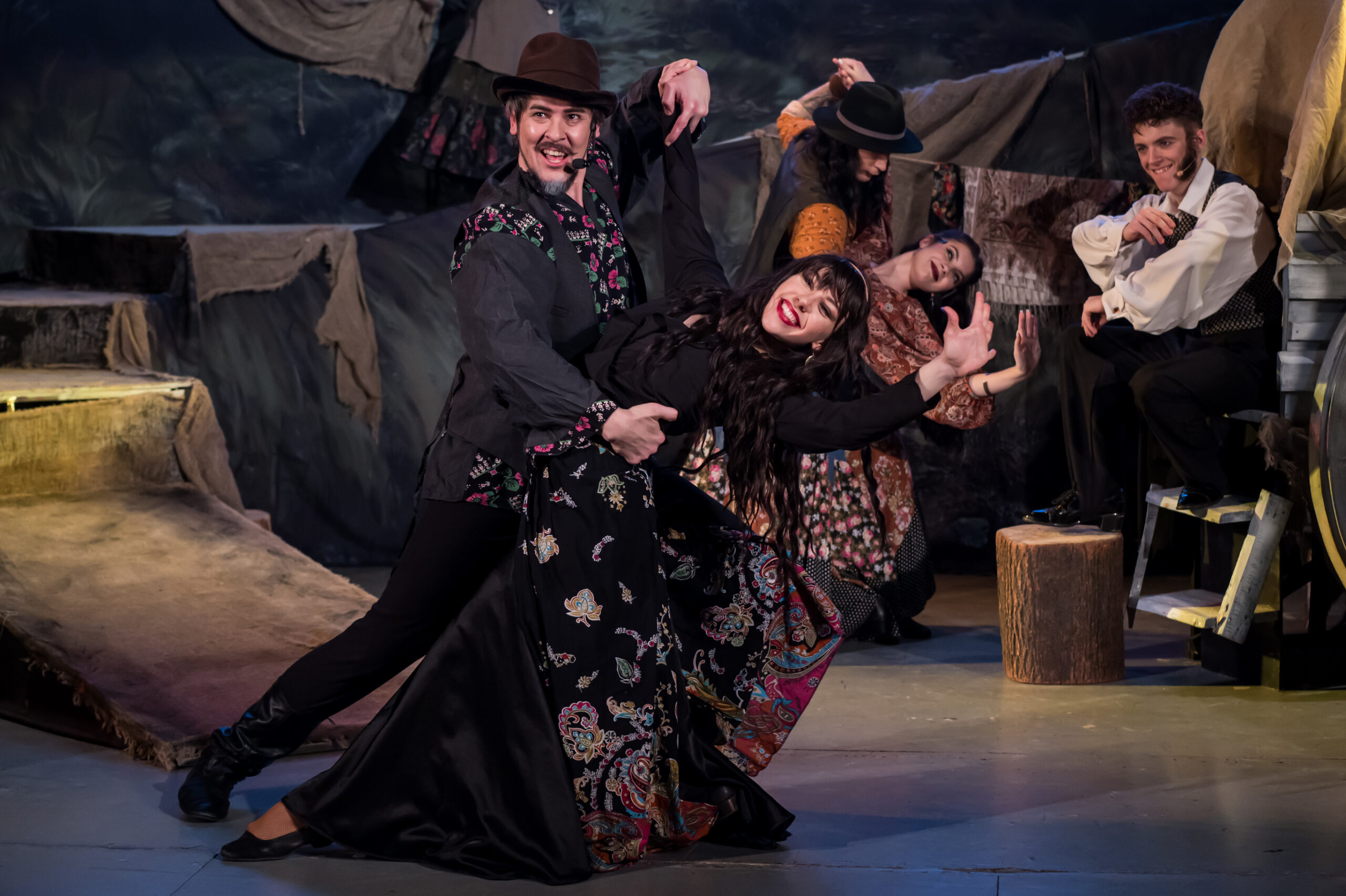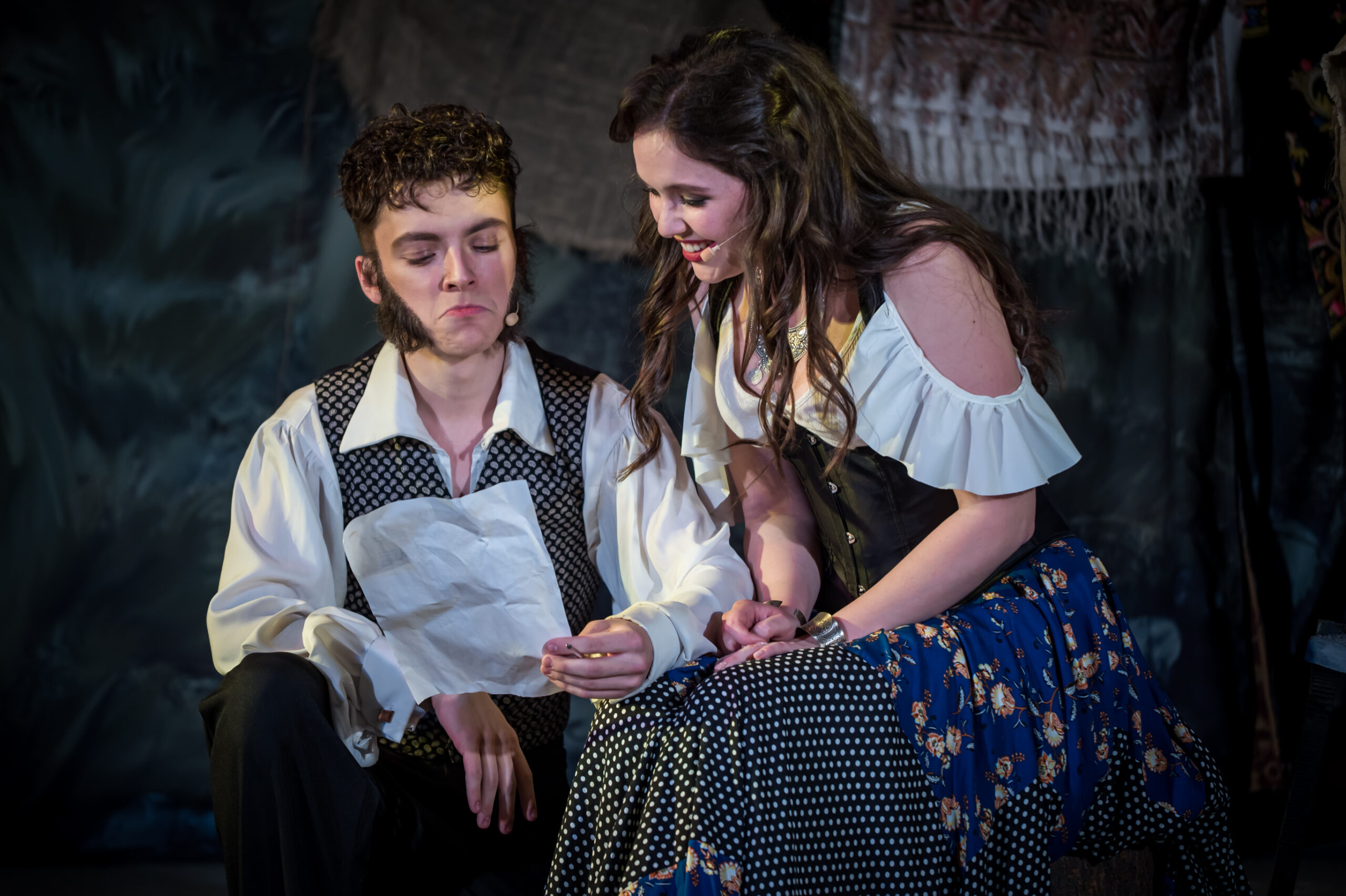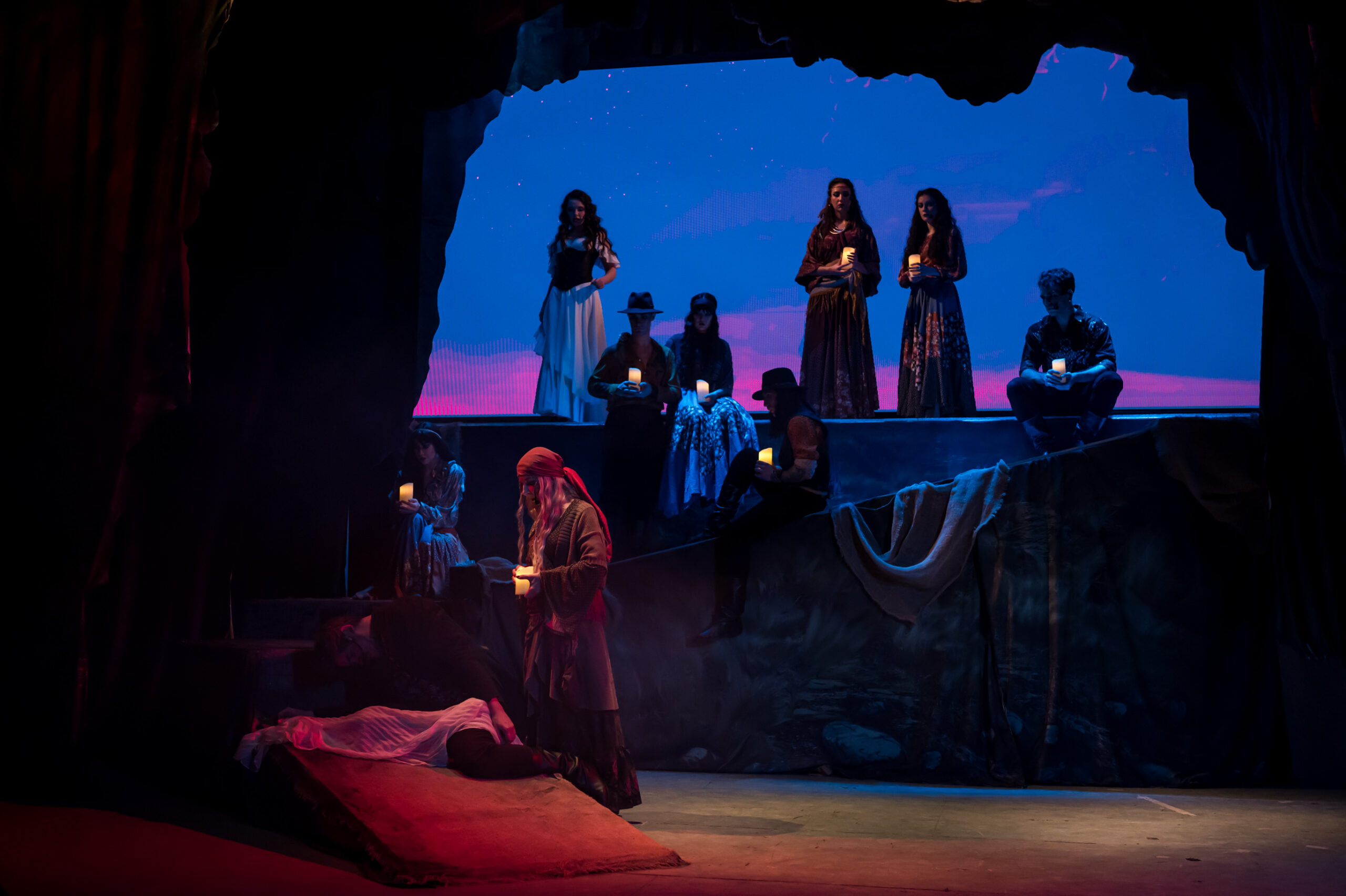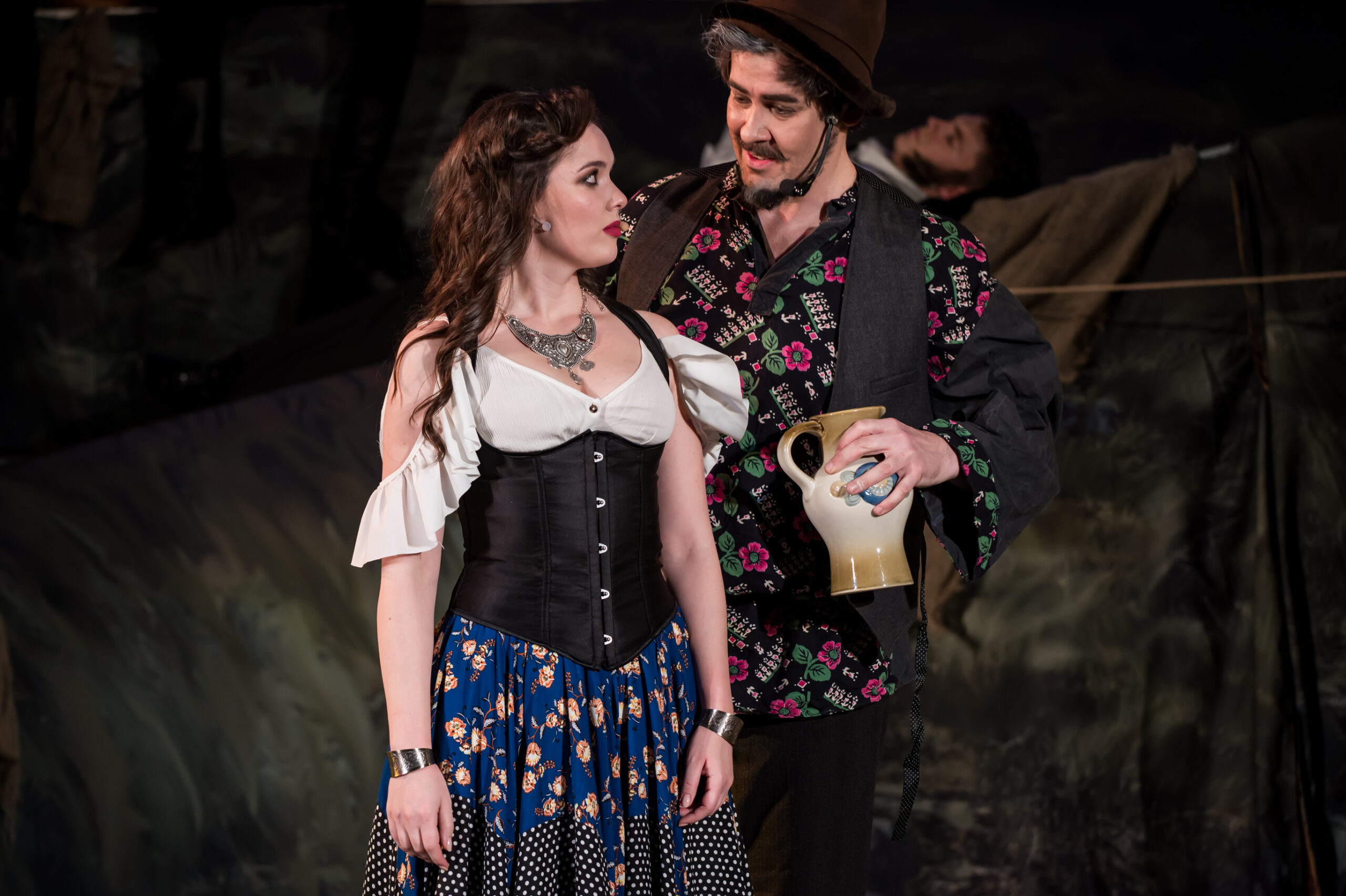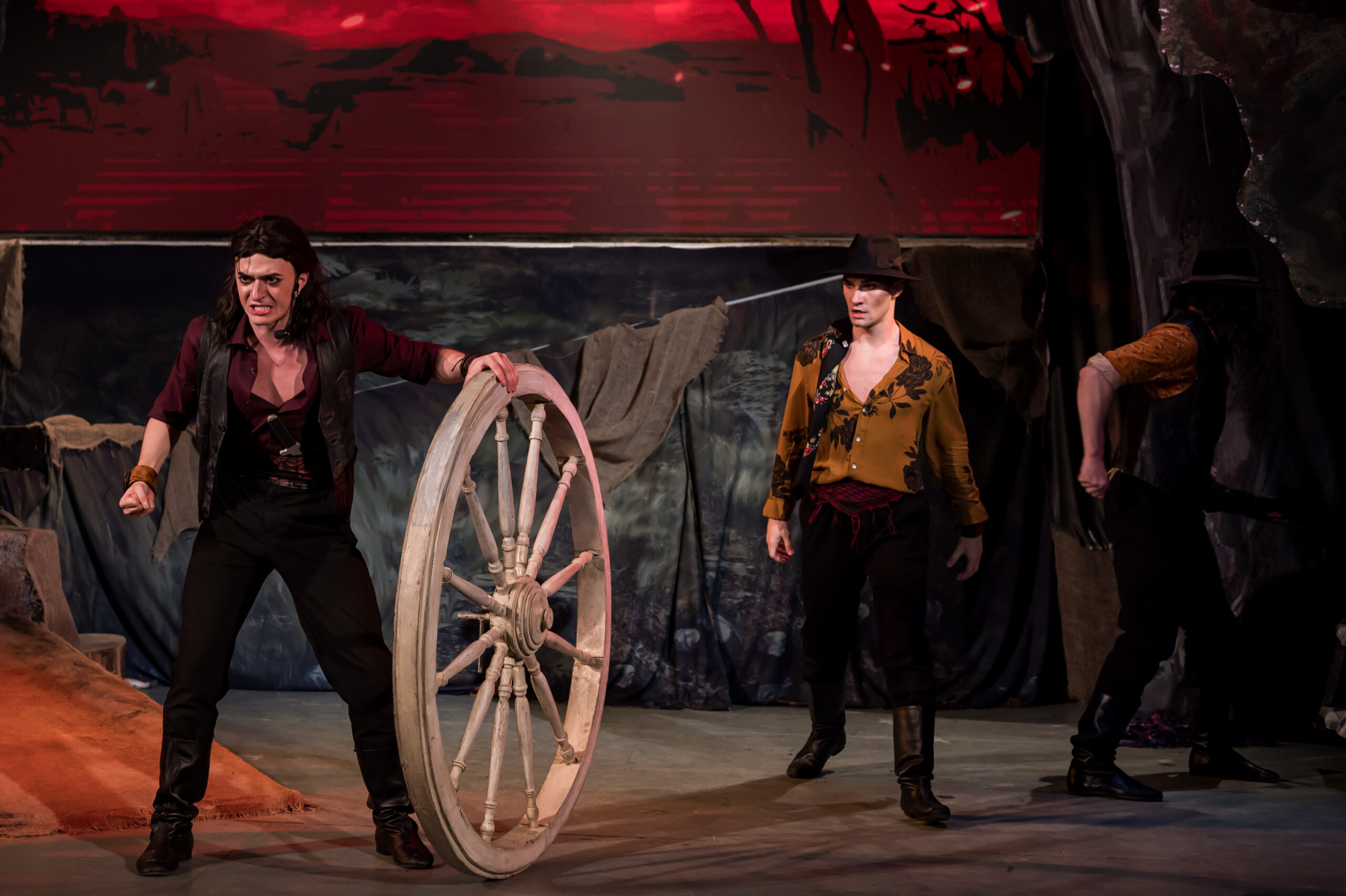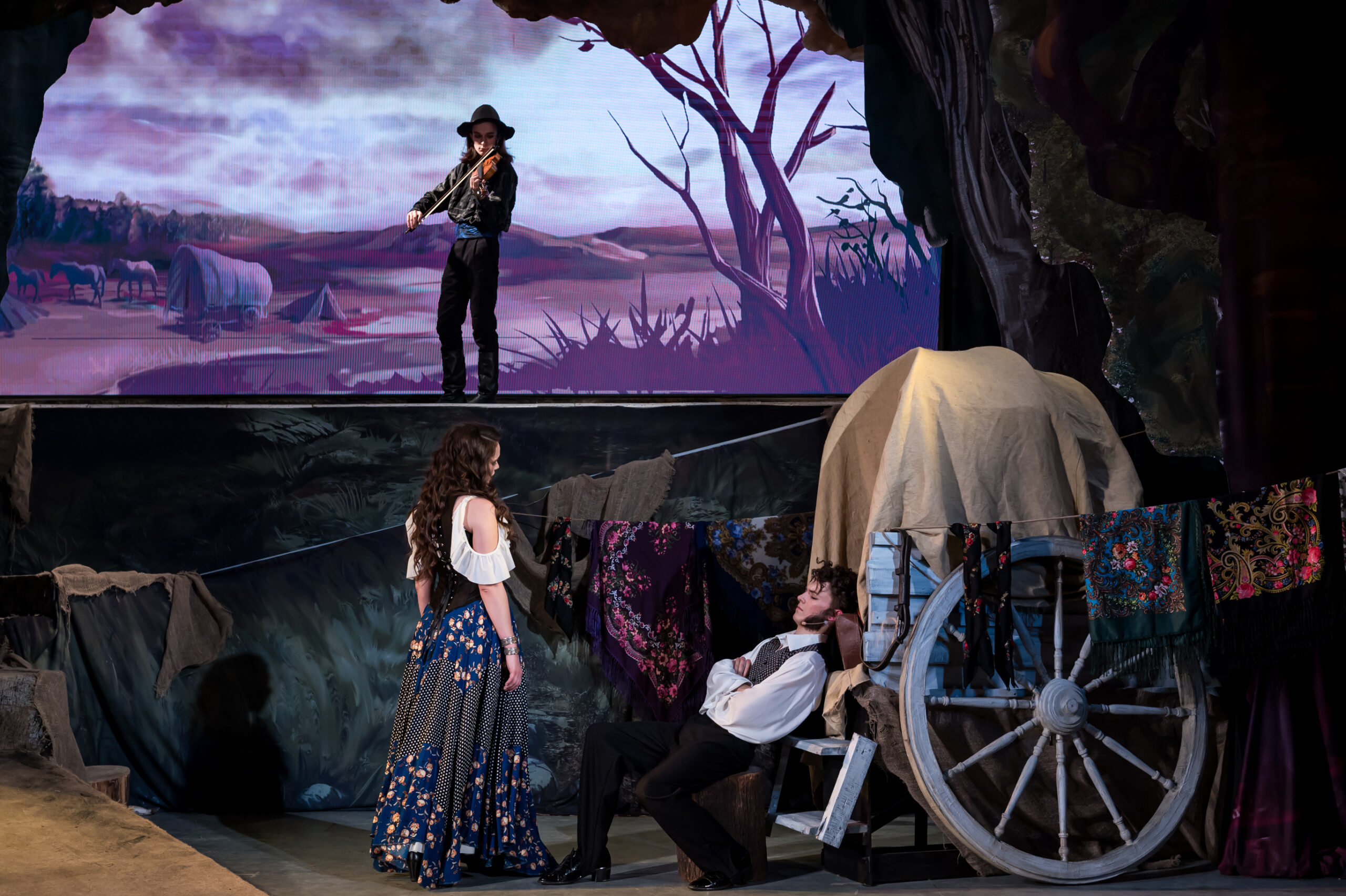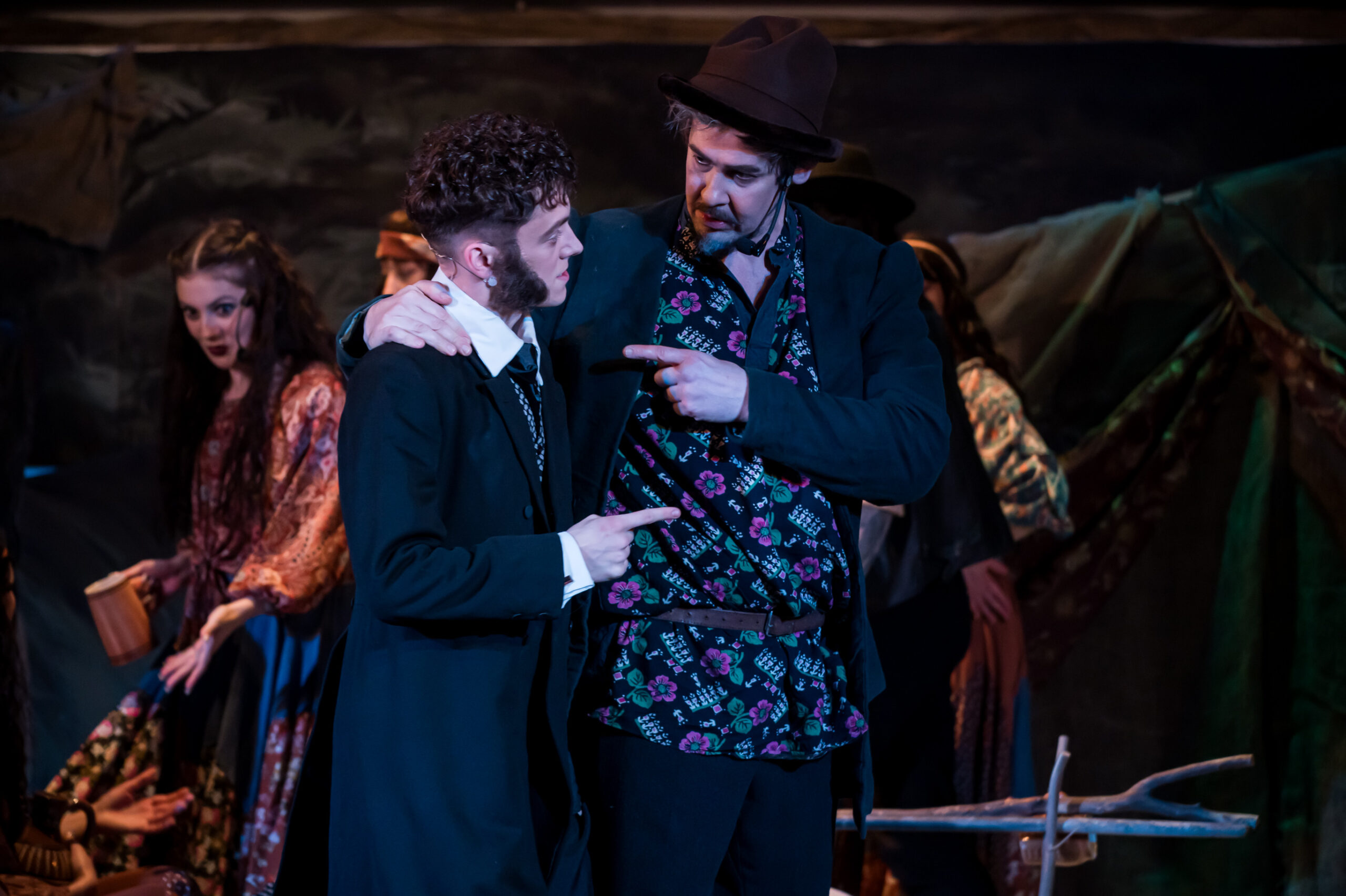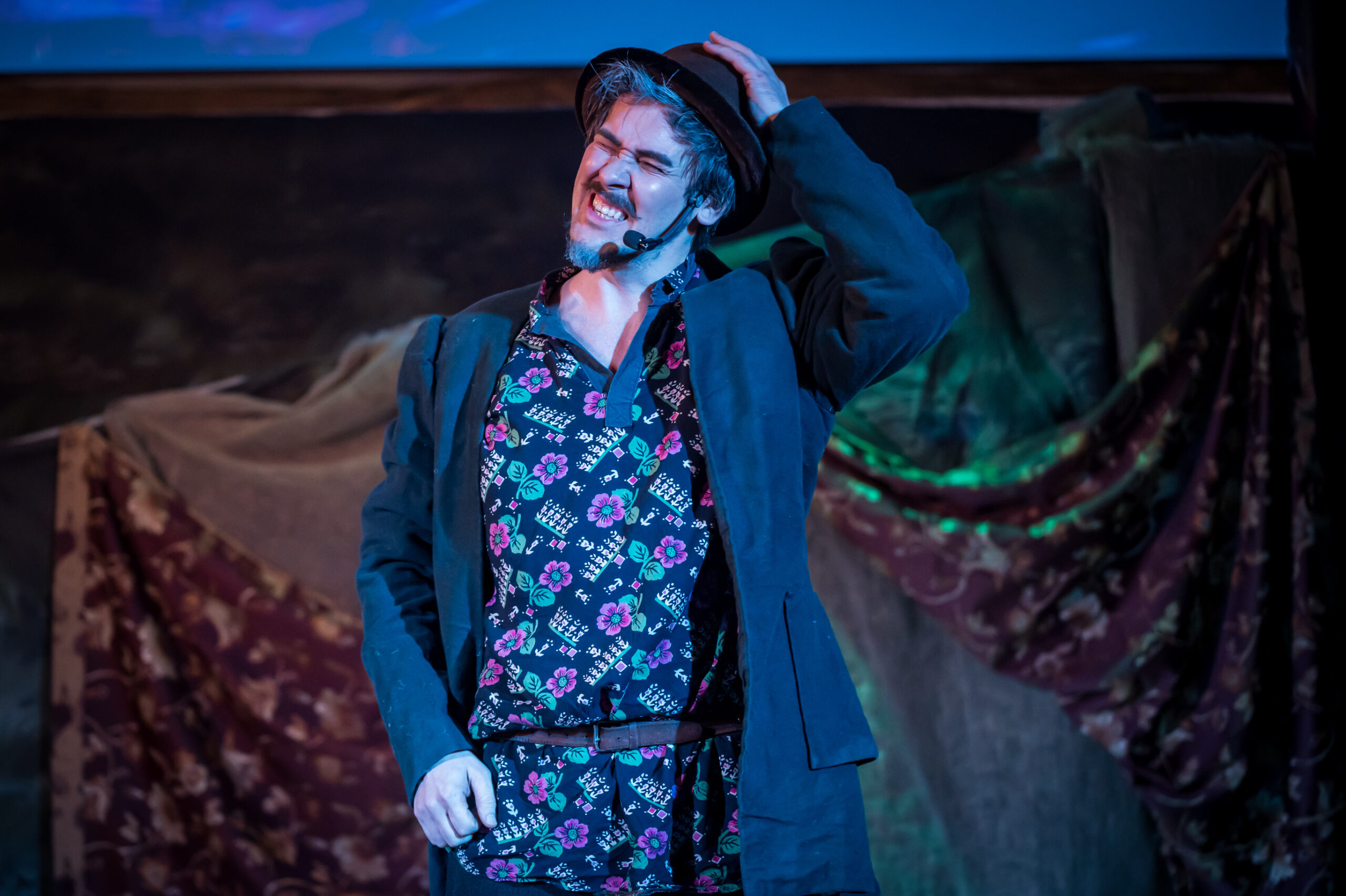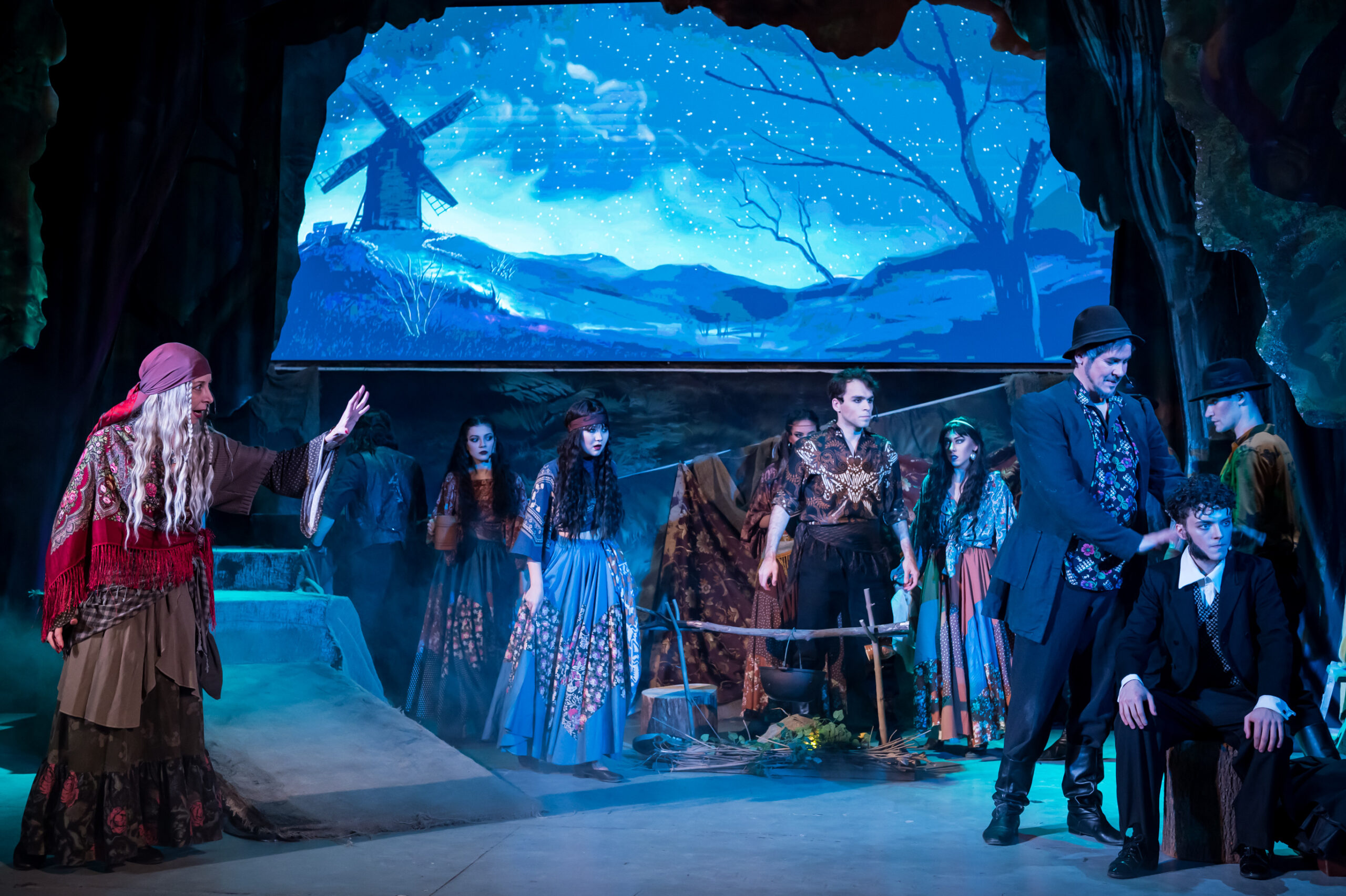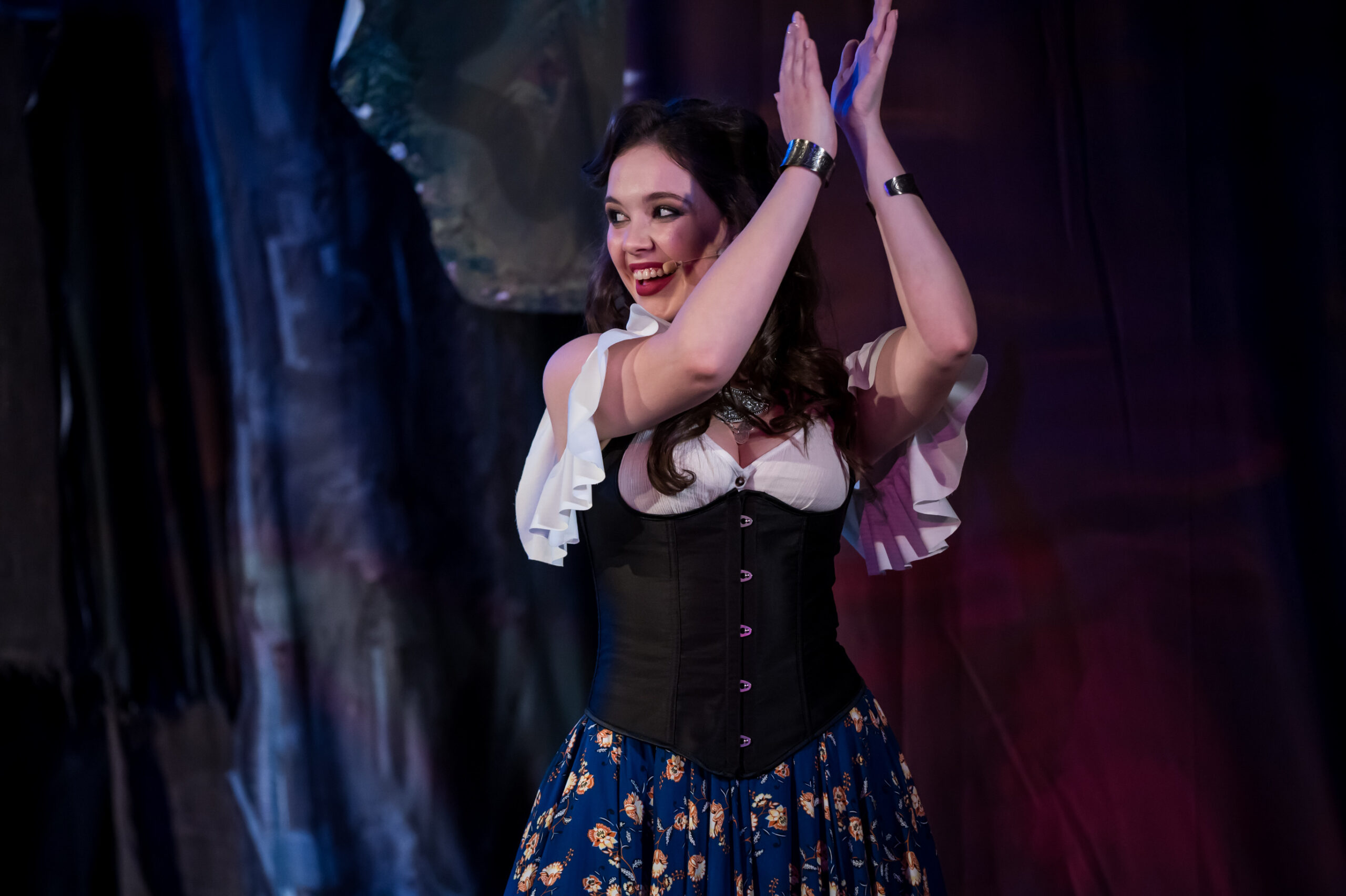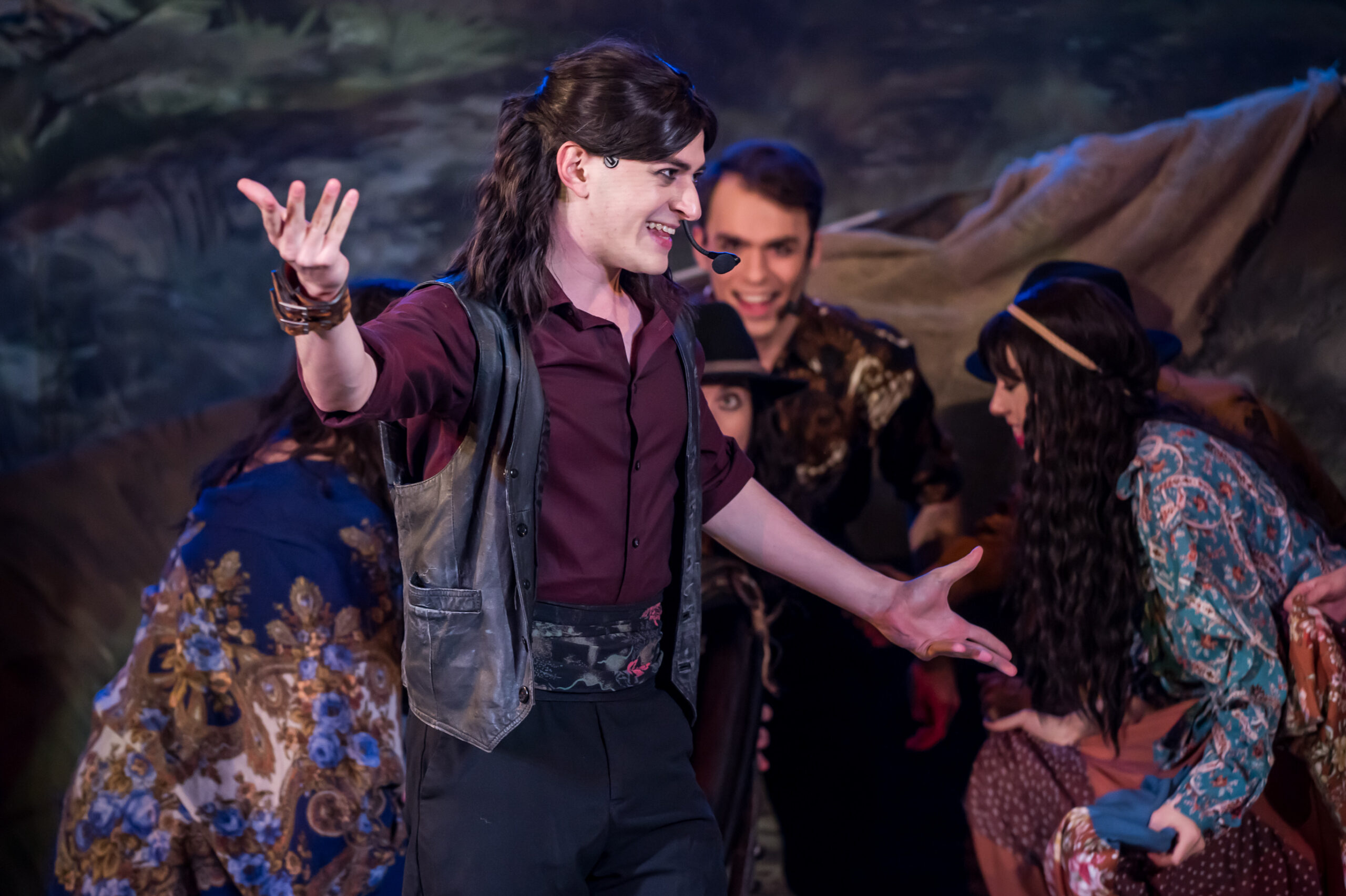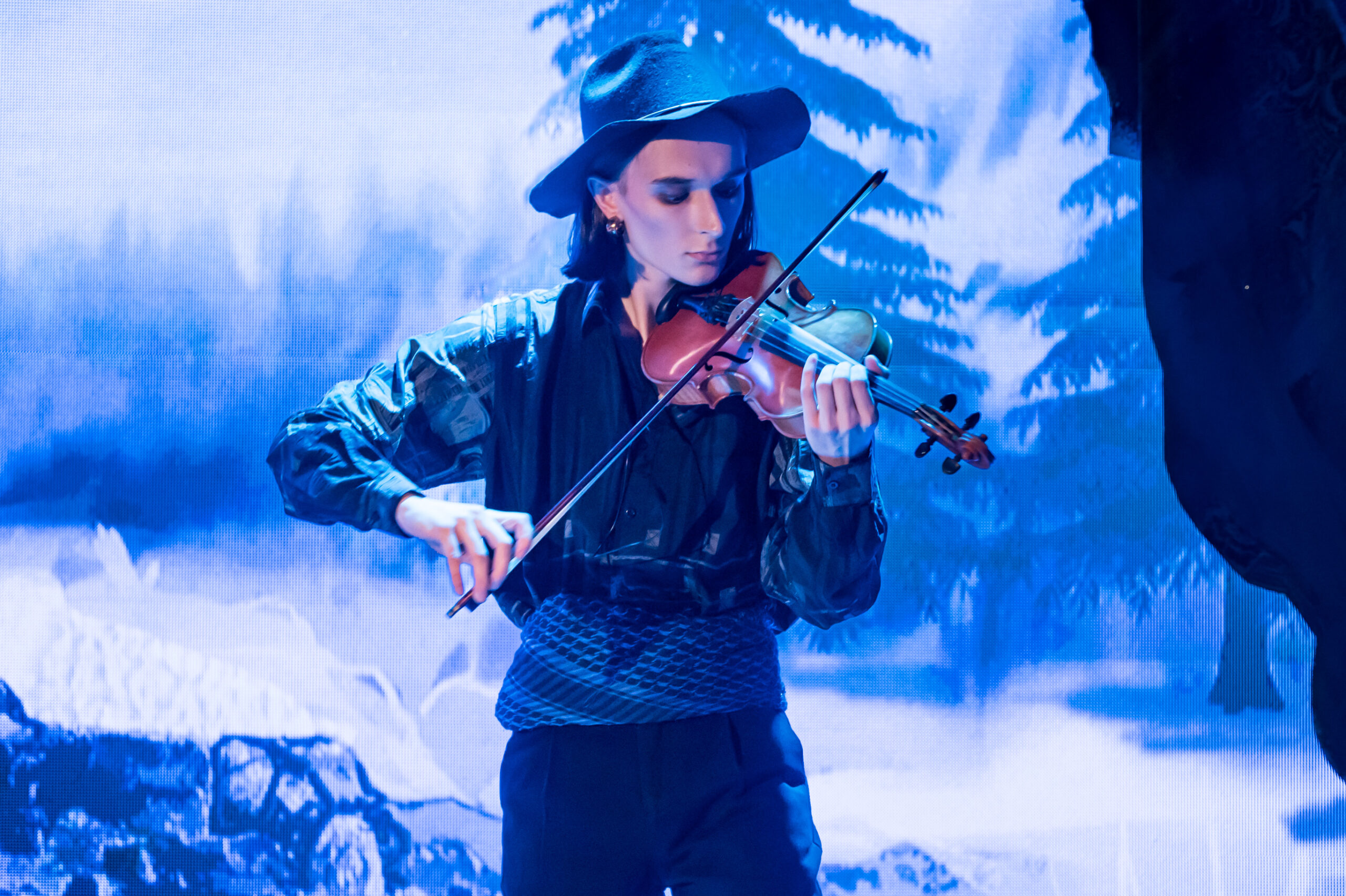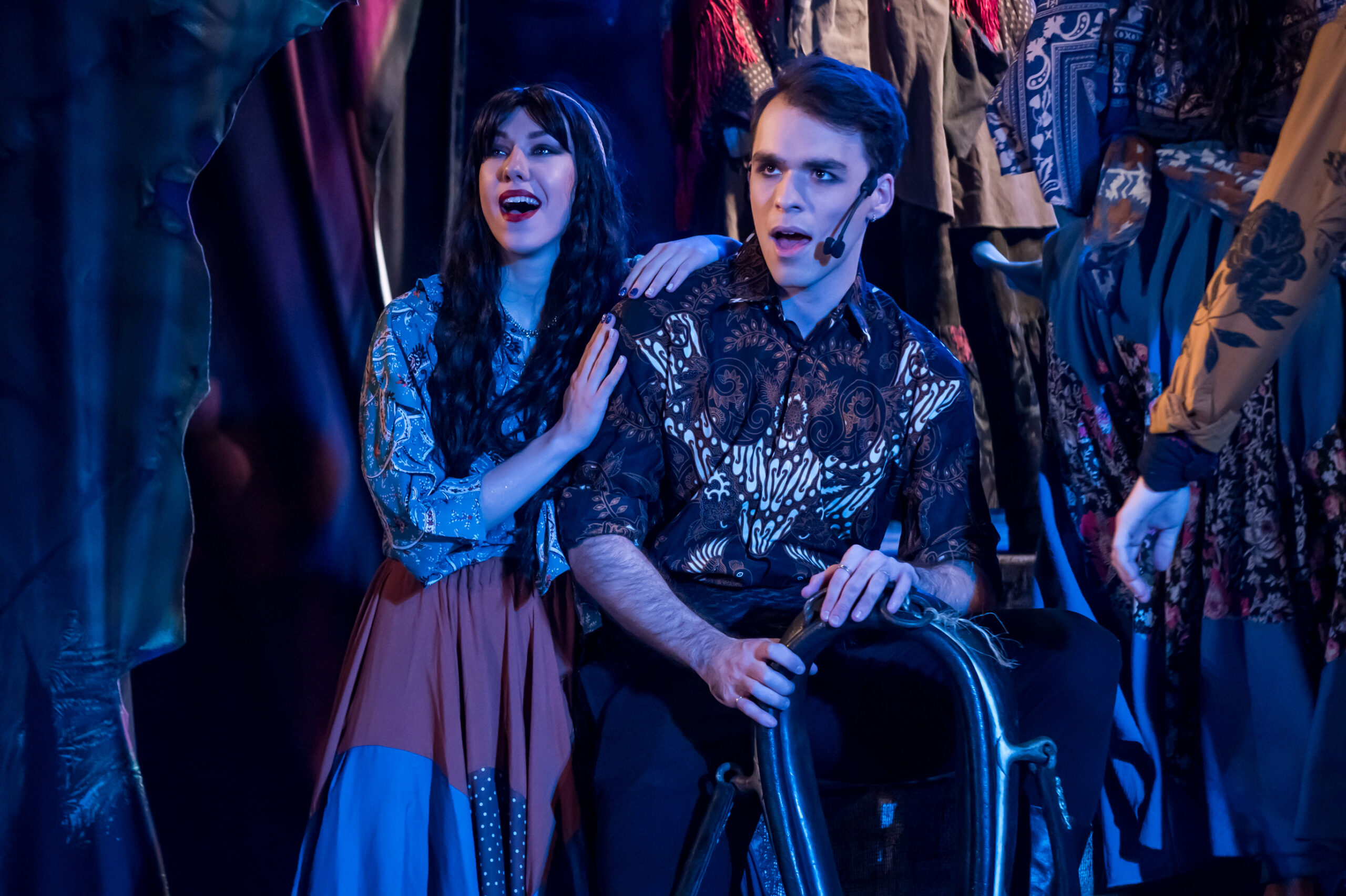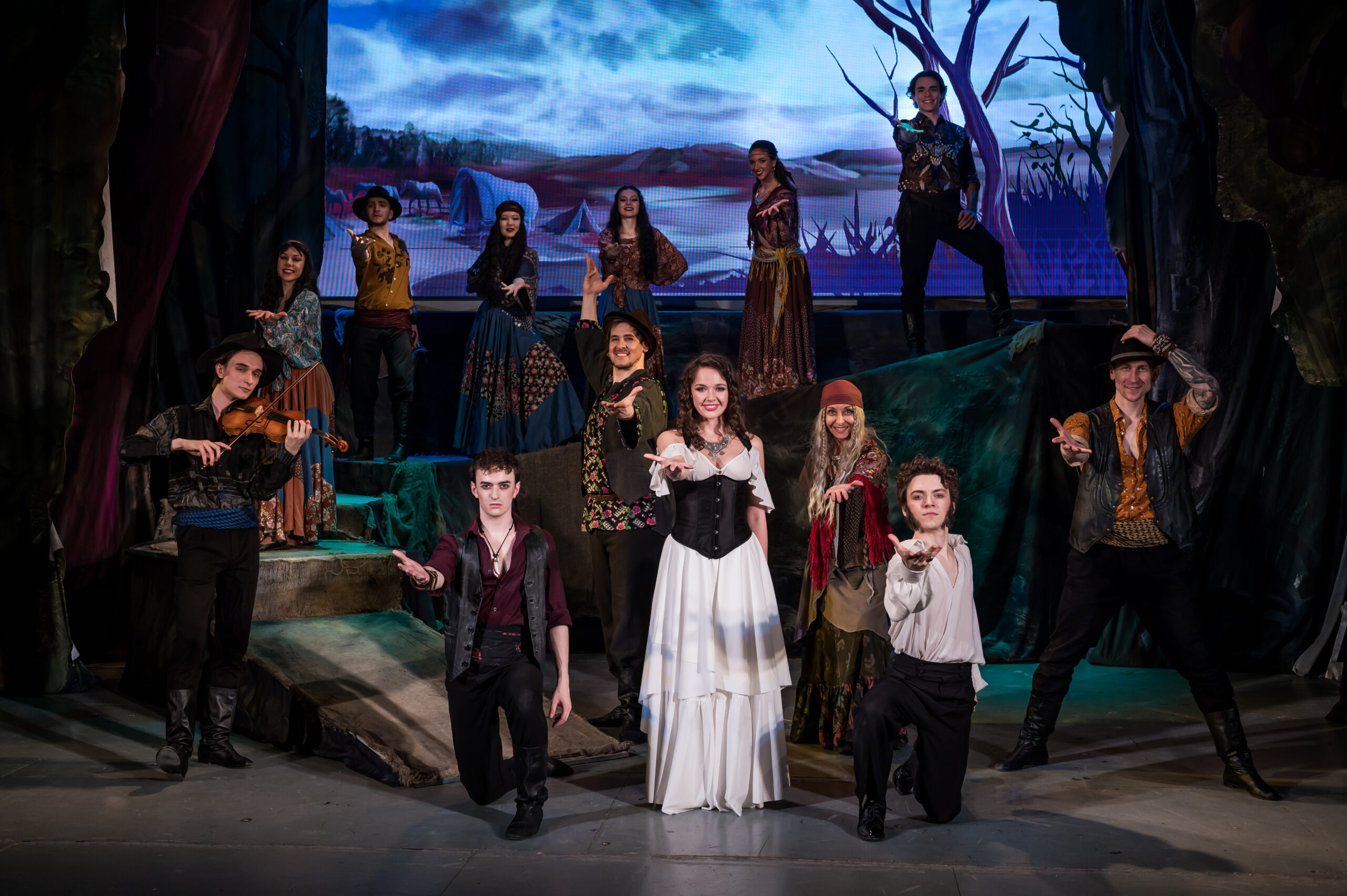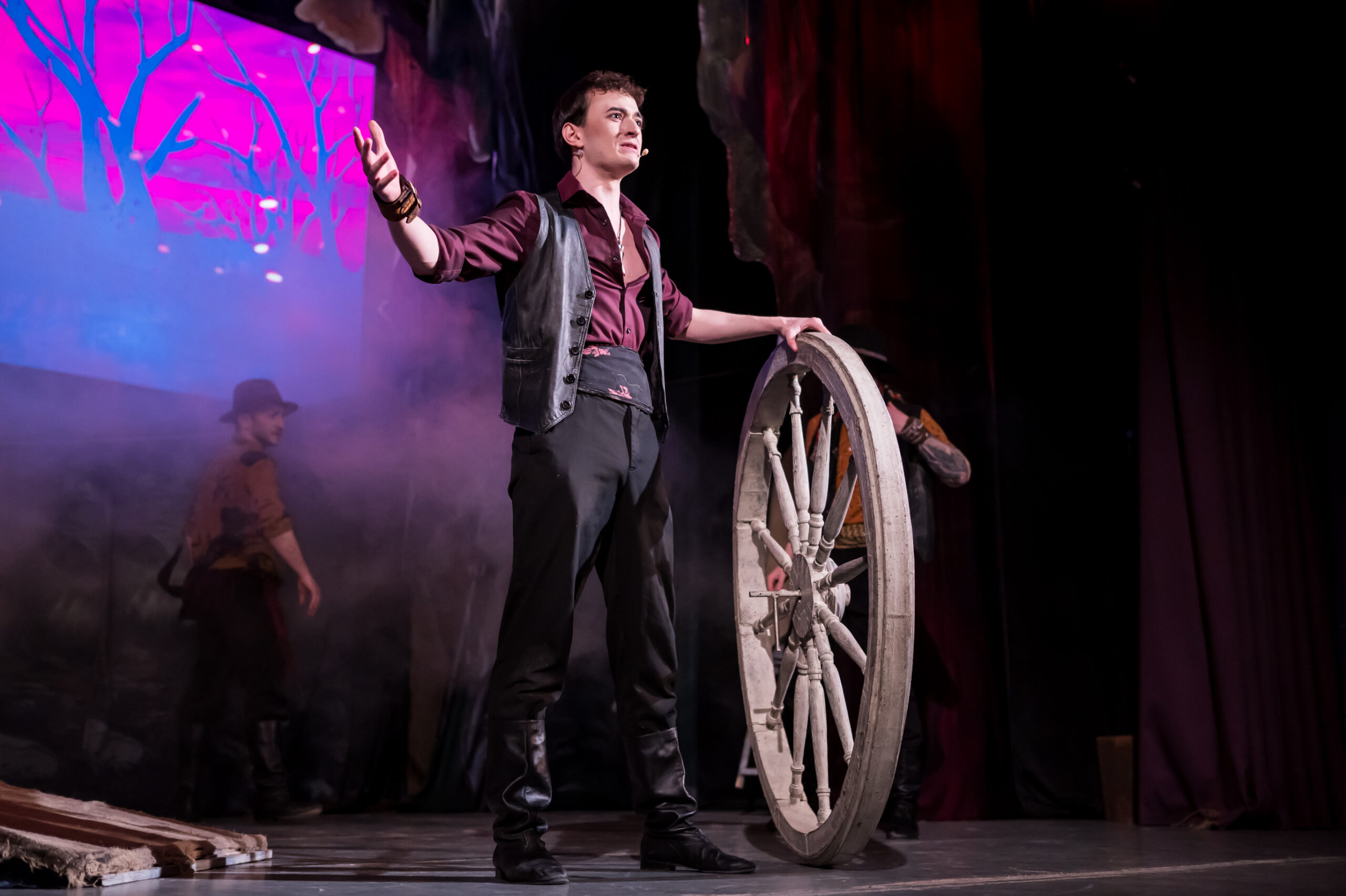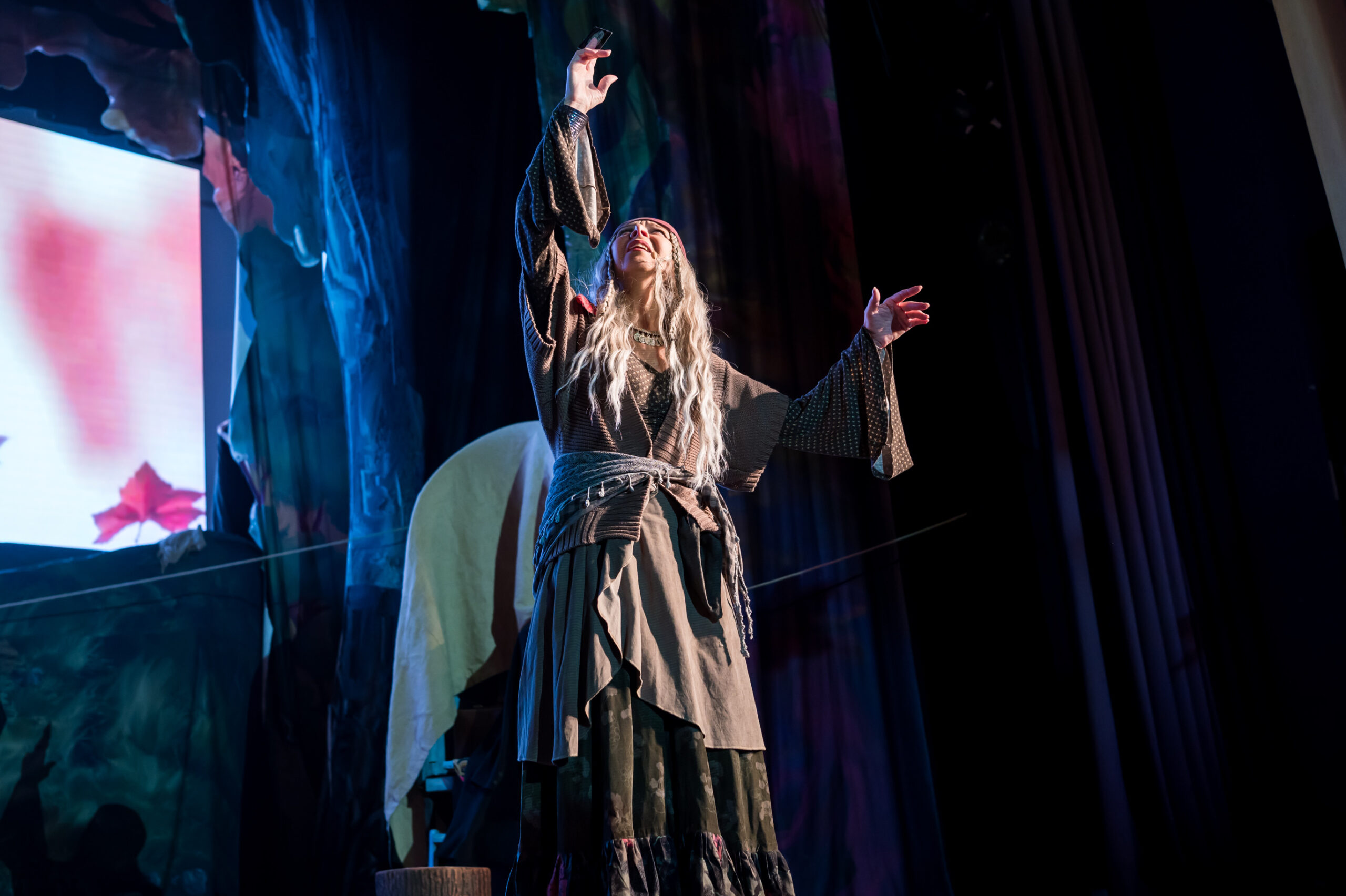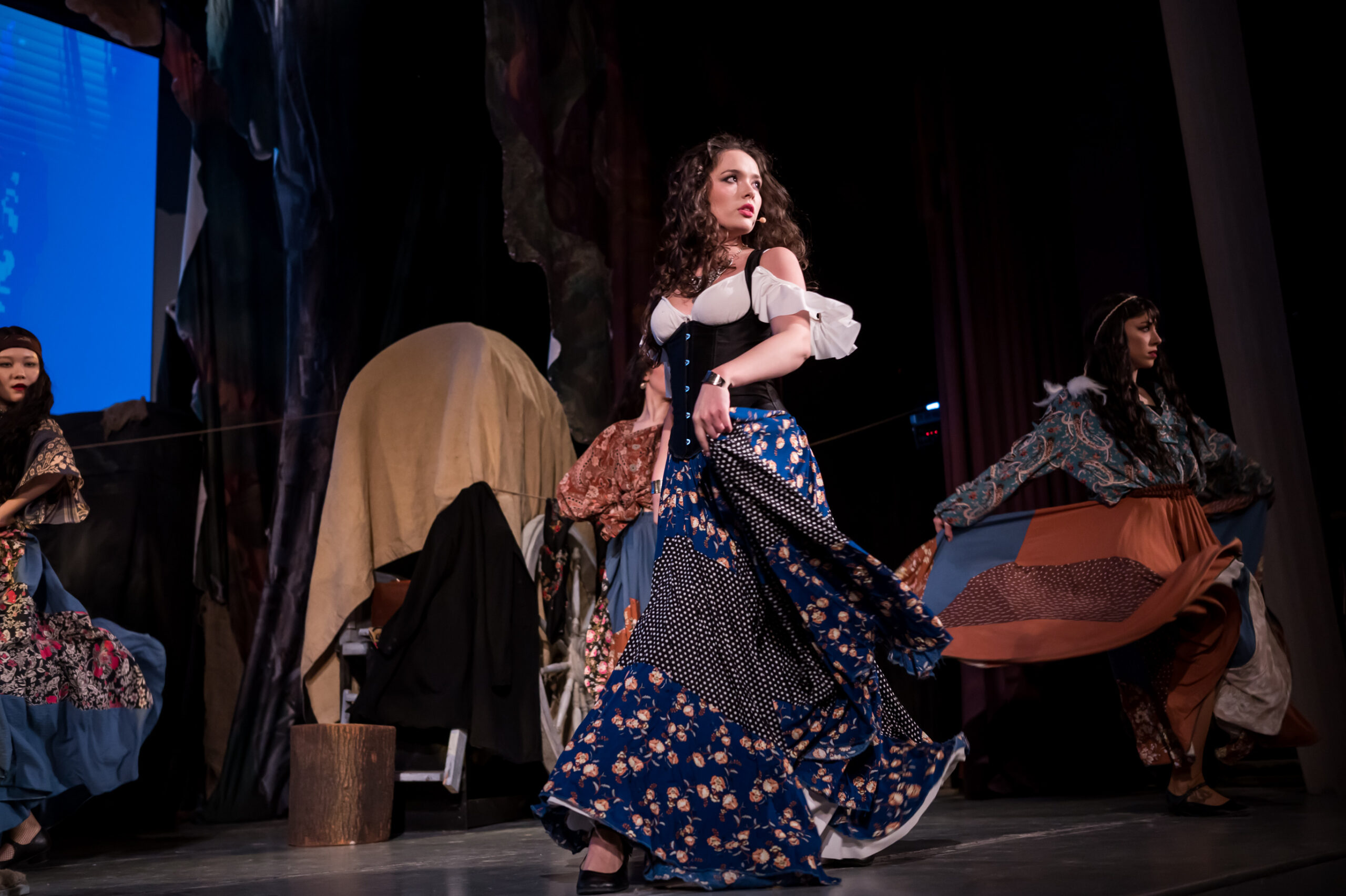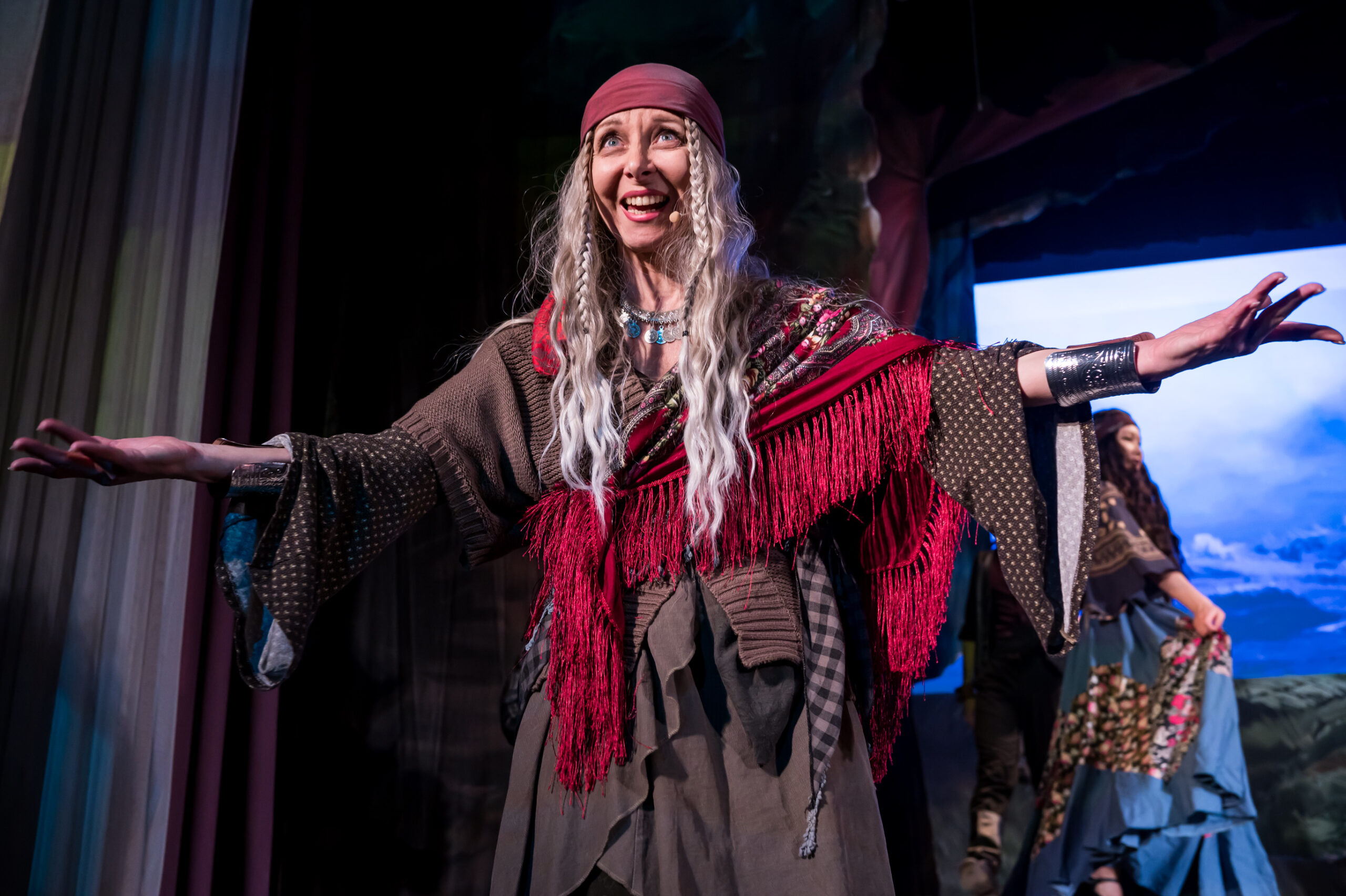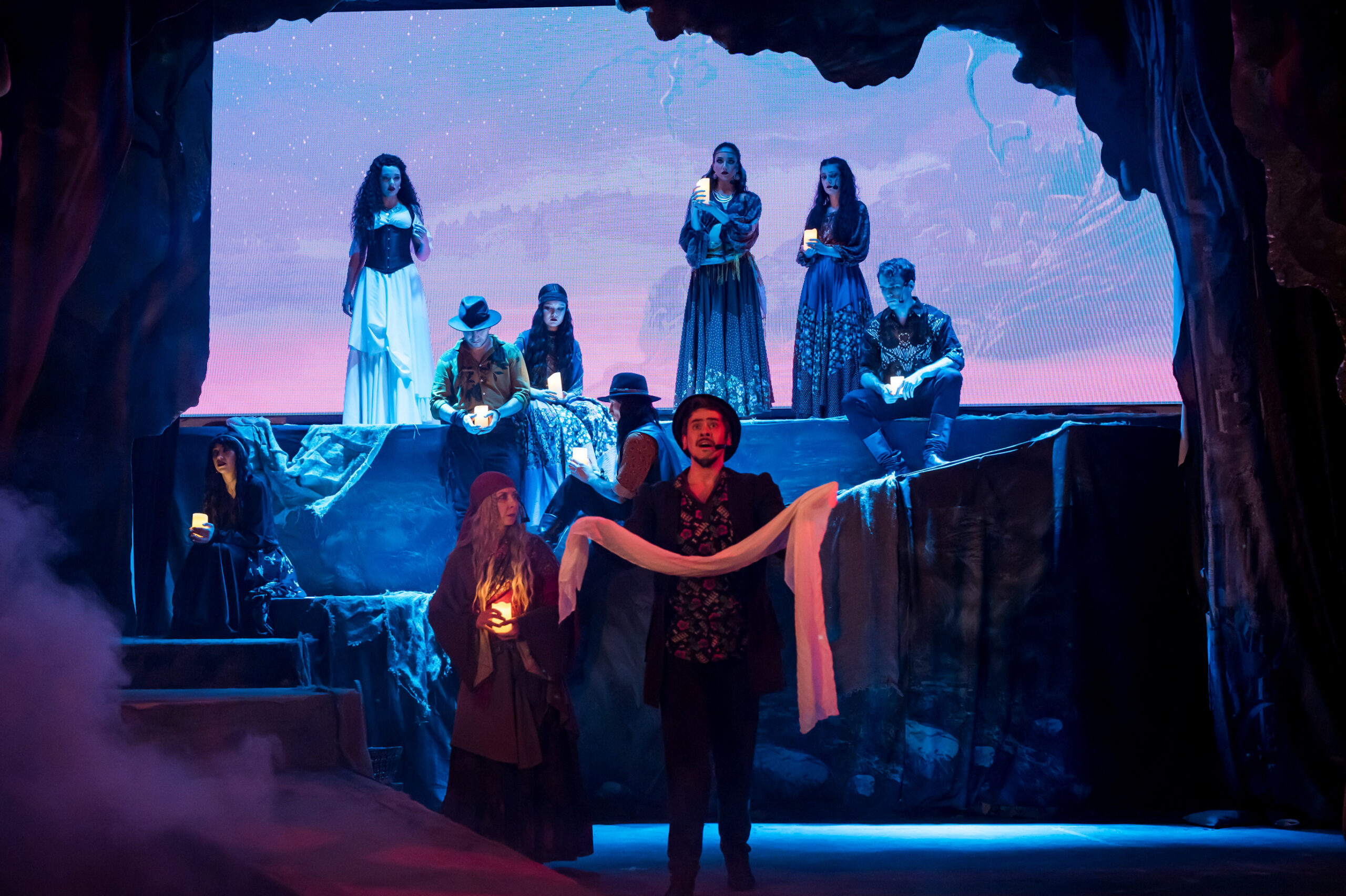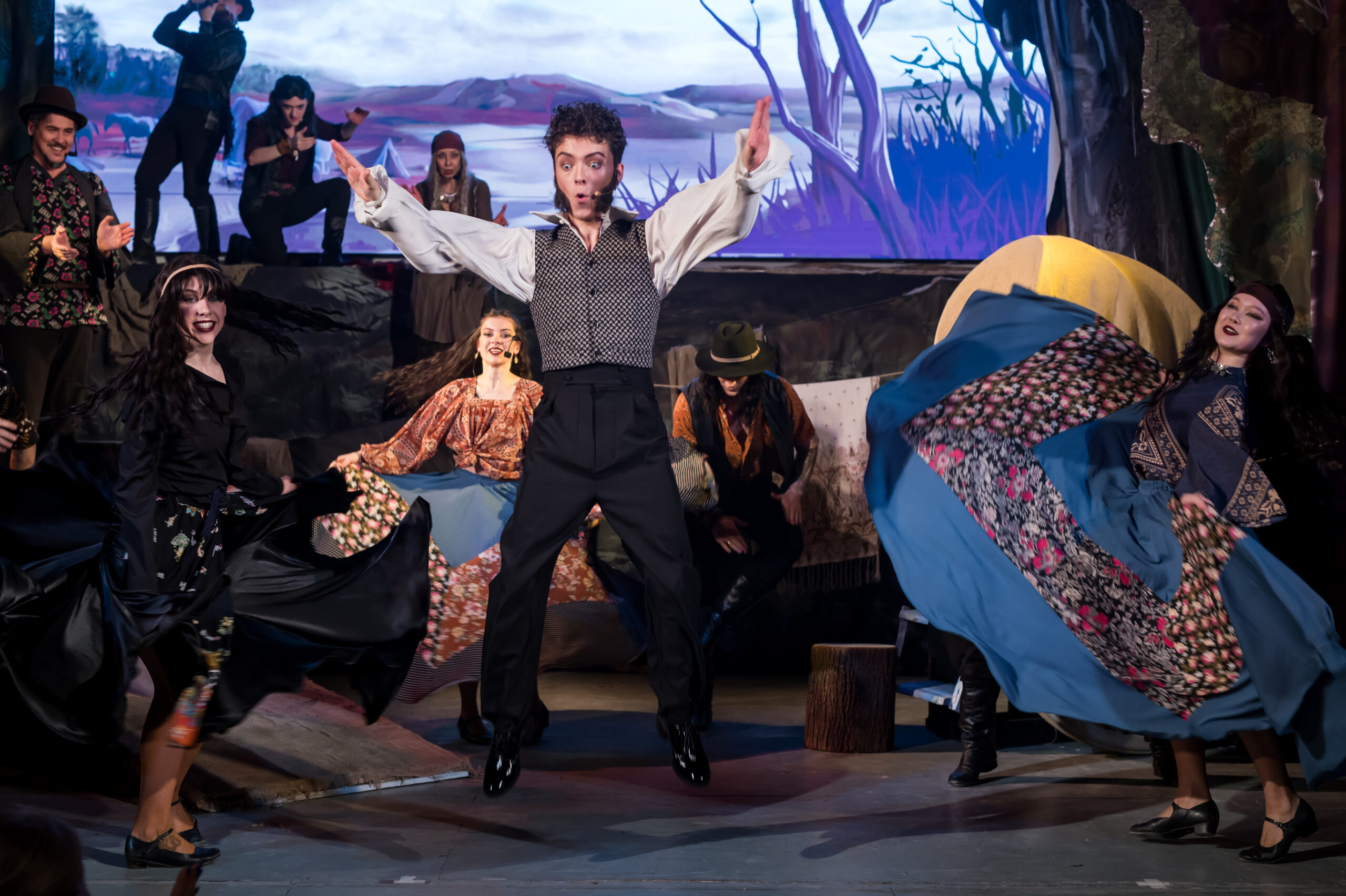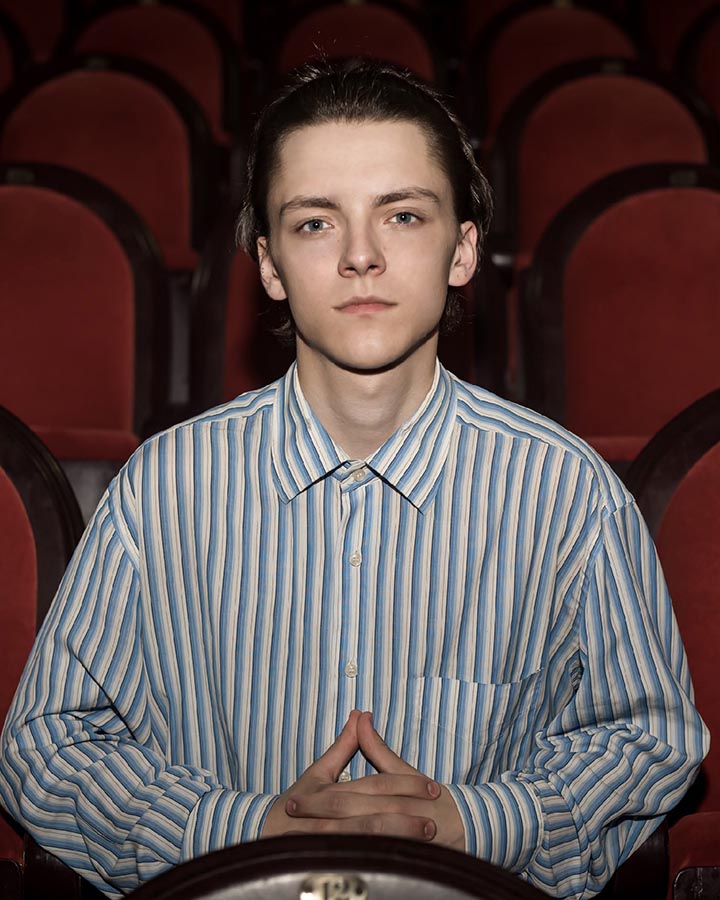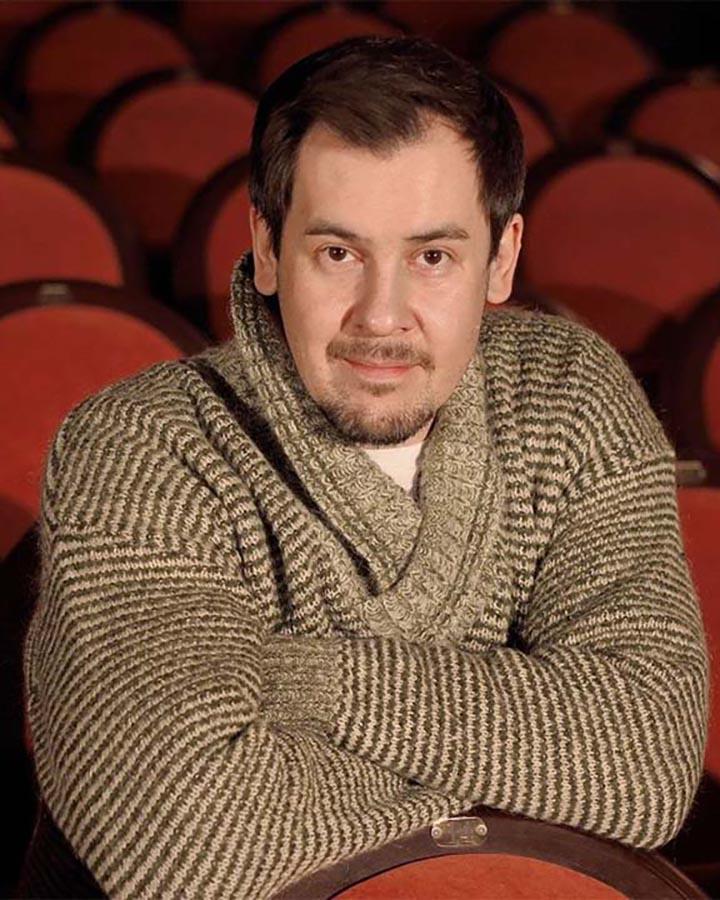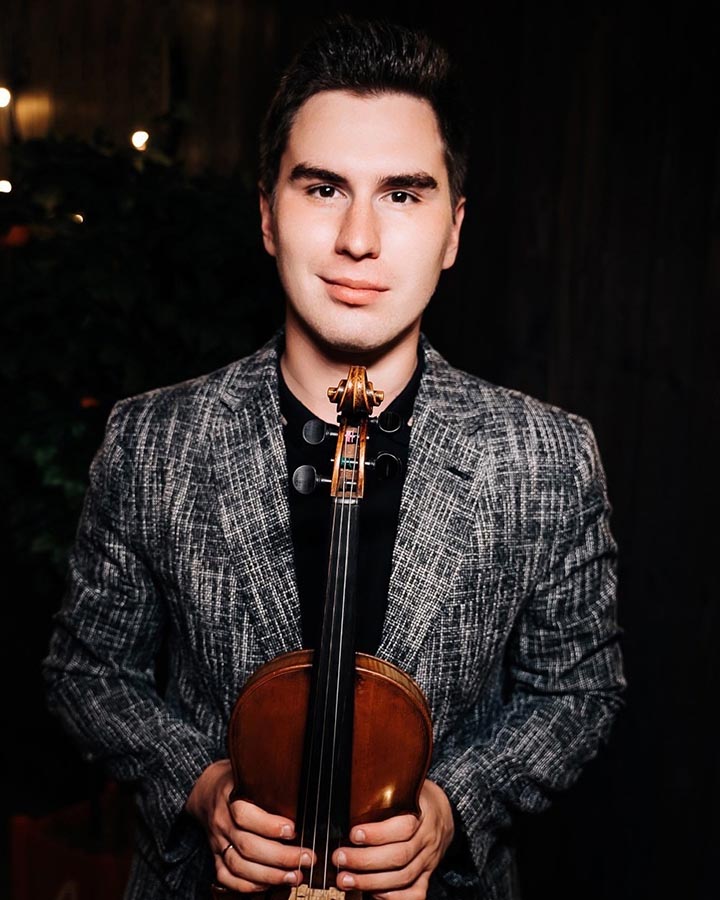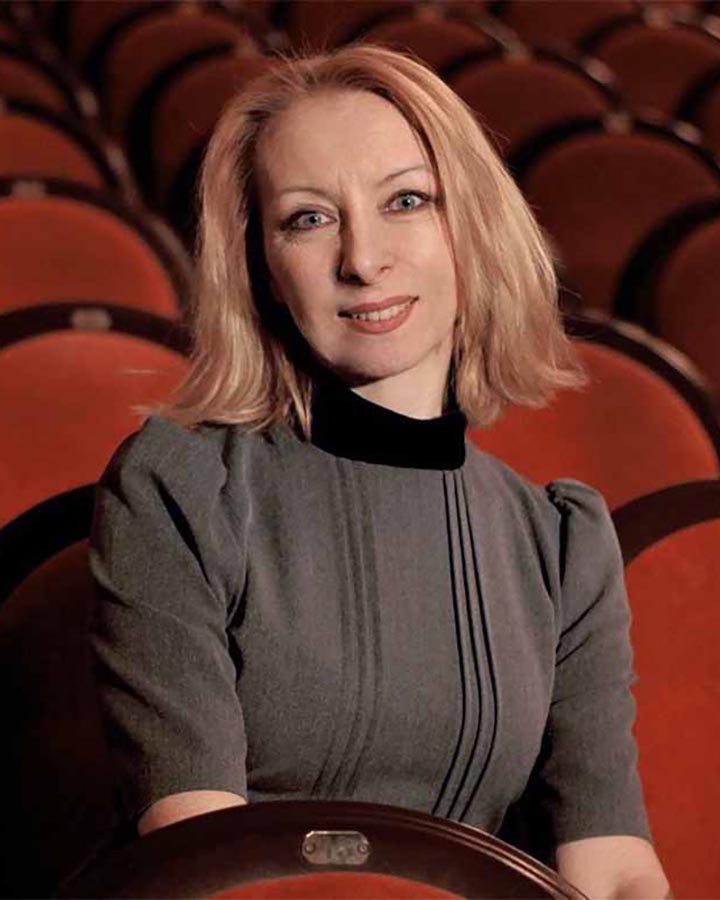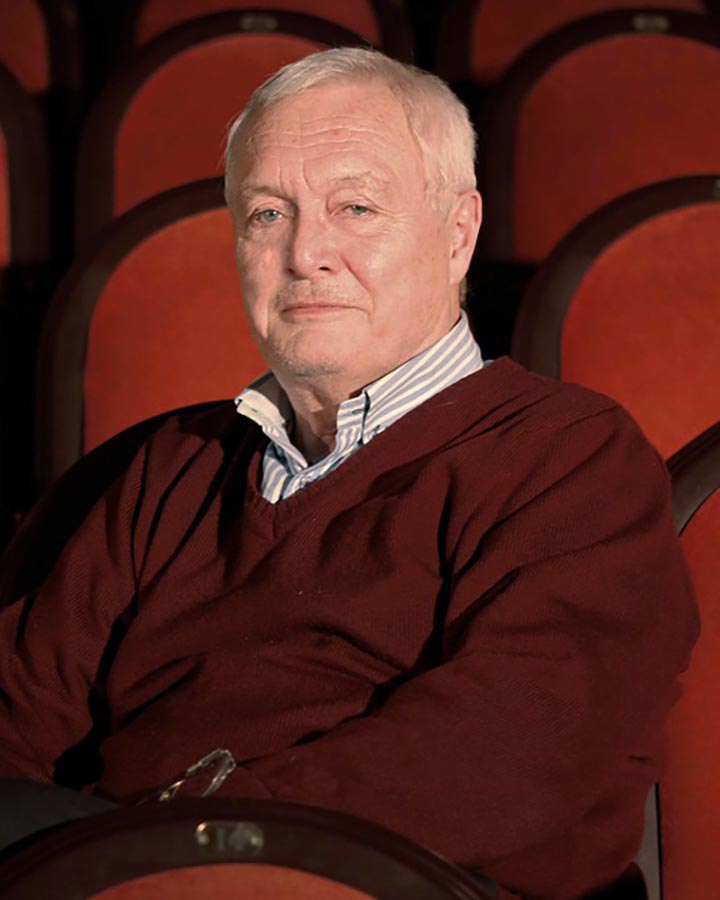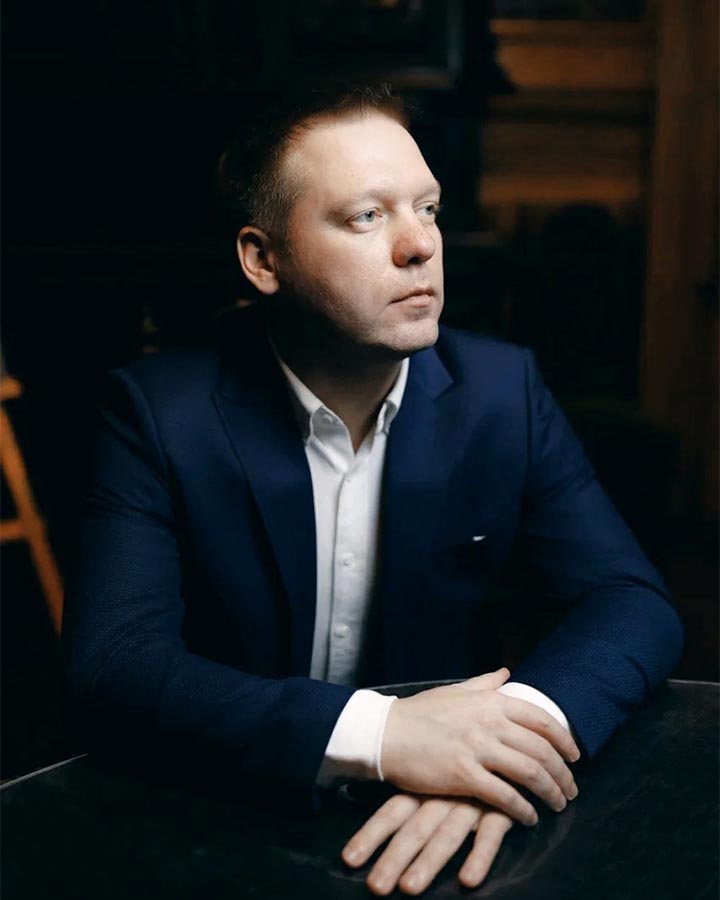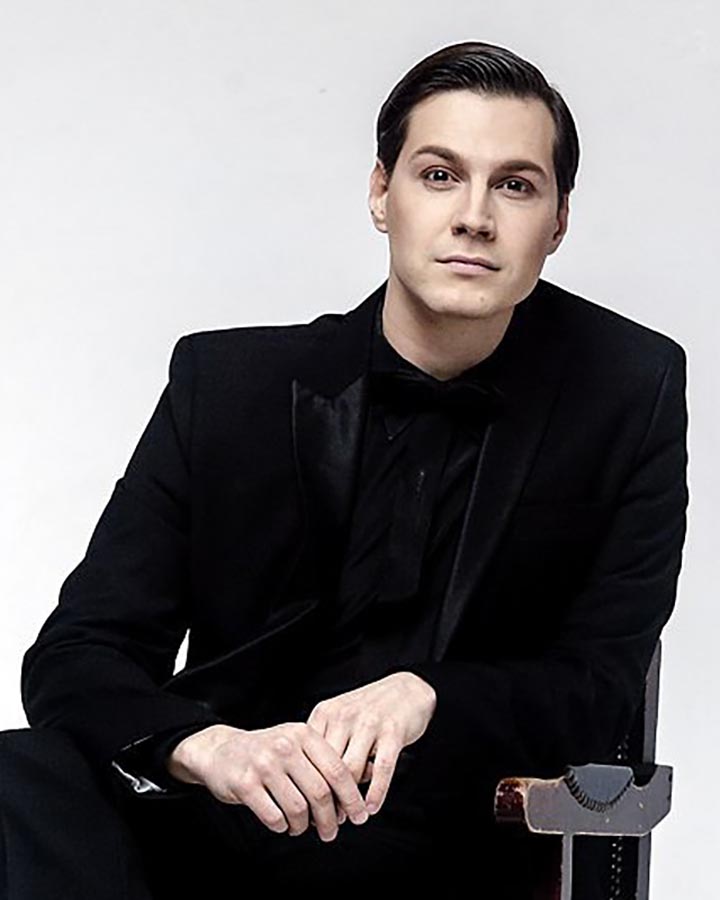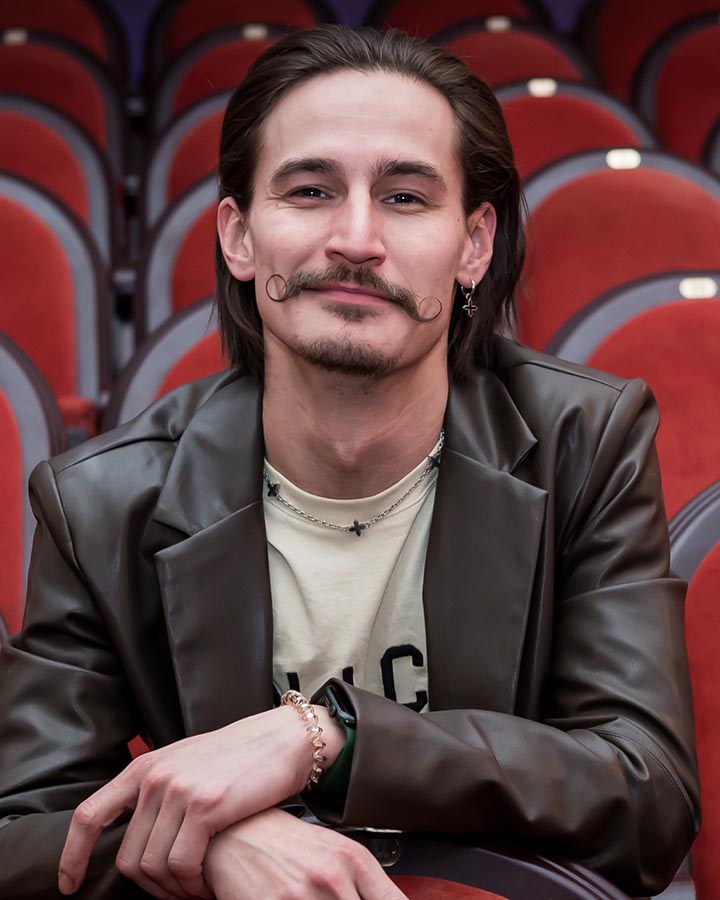Aleko
Theatre of
Russian Musical
Pushkin.
The Musical
From the creators of the popular
musicals “Verona” and “Titanic”
Aleko
Theatre of
Russian Musical
Pushkin.
The Musical
From the creators of the popular
musicals “Verona” and “Titanic”
The “Musical Pushkin” project narrates episodes of the poet’s youth and his first love.
The “Musical Pushkin” project narrates episodes of the poet’s youth and his first love.
Trailer
Trailer
There’s a legend that the twenty-year-old poet, during his “Southern Exile,” spent about a month traveling with a Gypsy camp across the boundless steppes of Bessarabia, where he fell in love with the beauty of the Gypsy Zemfira. This beautiful, albeit somewhat controversial legend, inspired the renowned St. Petersburg poet and playwright A. Kozyrev, in collaboration with the brilliant composer and maestro of Russian musicals, Alexander Baraev, to create the musical “Pushkin.” It’s quite symbolic that the musical premiered at the “Aleko” theater, considering the name of the main character in Pushkin’s “Gypsies.” However, there’s no need to draw any other parallels between these two works—they simply don’t exist!
Except perhaps for the name of the Gypsy Zemfira, which wasn’t invented by A. Pushkin himself but was a real name. Audiences will have the chance to immerse themselves in the life of Bessarabian Gypsies through touching and bright poetry, living one life with them, dancing fiery dances, and listening—or perhaps even singing—beautiful songs and romances.
Photos
Photos
All its performances are sold out and met with tremendous success. The review section on the Theater’s website is filled exclusively with positive feedback. Furthermore, many attendees travel from various regions of Russia to witness “Pushkin”. As such, there’s little doubt that the musical’s debut in Your country will mark a significant cultural milestone, drawing full-house audiences.
The musical is filled with complex artistic and technical solutions, amazing graphics, trick scenes, original special effects, and powerful video content
The best artists in this popular genre from St. Petersburg and Moscow are involved in “Pushkin.”
There is no other musical where Pushkin serves as the main romantic character, not just in Russia but globally.
The production is adaptable to stages of any size, and a complete synchronous translation on a large video screen will ensure a comfortable viewing experience for the audience.
Cast
Cast
Creative Team
Costume design
Natalya Chekanova
Lighting design
Vladimir Ilyashenko
Sound design
Vadim Fefelin
Technical supervisor
Anton Liptsev
Creative Team
Costume design
Natalya Chekanova
Lighting design
Vladimir Ilyashenko
Sound design
Vadim Fefelin
Technical supervisor
Anton Liptsev
Technical Requirements
Technical Requirements
